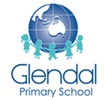Glendal Primary School provides a differentiated learning curriculum that targets the needs of our students. Learning programs support, challenge and extend student learning in every classroom.
Our curriculum follows the Victorian Curriculum, which promotes learning in the following domains: health and physical education, interpersonal development, civics and citizenship, the arts (visual and performing arts), English, the humanities (economics, geography and history), Languages other than English (Mandarin and French, in 5 and 6)mathematics, science, communication design, creativity and technology, information and communication technology (ICT).
Our teaching and learning program is supported by a whole school student wellbeing program which promotes social emotional learning (emotional intelligence) and mindfulness. Our programs develop the type of thinking and skills needed to prepare our students for successful life and work in a globalised economy.
Reading Recovery
Eligible Year 1 students are given the opportunity to participate in a series of individual literacy lessons, in addition to their classroom Early Years literacy program. This is for those students who, after their first year of schooling, are experiencing difficulty with reading and writing. Each lesson goes for thirty minutes, five days a week for a period of up to twenty weeks. Reading Recovery accelerates student learning and gives these students intensive teaching in the skills and strategies needed to be successful readers and writers.
EAL - English as a second language
Due to the high number of students who require teaching support to learn English language skills or consolidate basic knowledge, we have a specialised program that caters for these students' requirements. Students participate in this program based on need, they may start with individual instruction then move into small groups. Classroom teachers and our EAL teachers work together to support these students, so that they can gain confidence in speaking, reading and writing English, as soon as possible.They are supported in the classroom with resources designed by the EAL teaching staff. They may also have an EAL school report for Semesters 1 and 2.
English as an Additional Language (EAL) students follow a pathway of development in learning English that is different from students for whom English is their first language. EAL students deepen their understanding of the English language through practical activities and focus lessons in school. The two EAL stages are A (Foundation - Year 2) and B (Years 3 - 6). EAL students work through this continuum until they have a confident grasp of the English language.
Semester 2 2023:
Foundation students developed their early reading skills through using picture cues, decoding and comprehension strategies. After reading, they practised retelling and sequencing story events. Students enjoyed the rhythm of language through stories, songs and rhymes. They explored sounds and words and applied their knowledge to their writing. Students examined the components of a simple sentence. They focused on formal handwriting skills, along with the correct pencil grip. Students were encouraged to use specific vocabulary when participating in class discussions and oral presentations.
Year 1 students completed a range of activities to strengthen their literacy skills. Reading groups were focused on decoding strategies, sequencing text, comprehension and text response. Students learned about the structure and language features of text types including narratives, recounts, procedures and persuasive texts. In their own writing, they applied simple punctuation and grammar. Spelling activities centred on identifying and recording sound and letter patterns. When presenting Share and Chat items, students used appropriate vocabulary.
Year 2 students read a variety of texts and used comprehension strategies to build literal and inferred meaning. They utilised punctuation to support phrasing and fluency when reading aloud. Students explored sound, visual and meaning spelling strategies. They composed their own written narratives, recounts, letters, poems and procedures. Students appropriately sequenced their ideas according to text structures. They refined their handwriting skills in preparation for cursive writing. Students prepared personal responses to share and chat topics and presented their ideas through formats of their choosing.
Year 3 students read a range of fiction and non-fiction texts, applying multiple comprehension strategies, including finding the main idea and identifying the point of view. They analysed texts by making connections, inferences and predictions. Students wrote narratives, persuasive texts, diary entries and poems. They focused on descriptive language, figurative language and persuasive techniques. In spelling and grammar, students built knowledge of visual, sound and meaning strategies, using accurate punctuation and grammar with a rich vocabulary.
Year 4 students read and interpreted a range of fiction and non-fiction genres. They explored various ways to comprehend texts, including how to compare, analyse and make inferences. Students drafted and edited narratives, procedural, persuasive and explanation texts, using appropriate grammar, spelling and punctuation. They utilised different forms of digital media to research and present information. Students participated in debates, presentations and speeches, whereby they considered the purpose and audience when planning, rehearsing and presenting.
Year 5 students studied the structural and language features of persuasive, procedural, narrative and script writing. Spelling and grammar activities focused on building knowledge of visual, sound and meaning spelling strategies, important grammar rules and the development of vocabulary. Students read and viewed a broad range of text types, including novels and examples of writing genres. Comprehension techniques were further developed through a range of reading response activities, with a strong focus on inferential comprehension. Students were engaged in both focused teaching sessions and regular literature circles.
Year 6 students read a variety of fiction and non-fiction texts, focusing on the structure and features of these and analysing the content. They composed their own biography, persuasive, narrative, explanation and information texts; identifying language and grammatical structures unique to each of these genres and editing their own and peers’ work. Each text type culminated in a Big Write or group project to allow for collaboration, discussion and application of learning. Students enhanced their speaking and listening skills by participating in a range of presentations including literature circles, creating a podcast and presenting artefacts for an exhibition.

